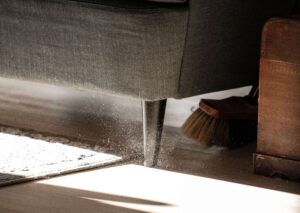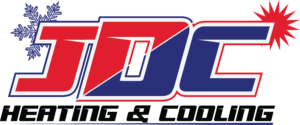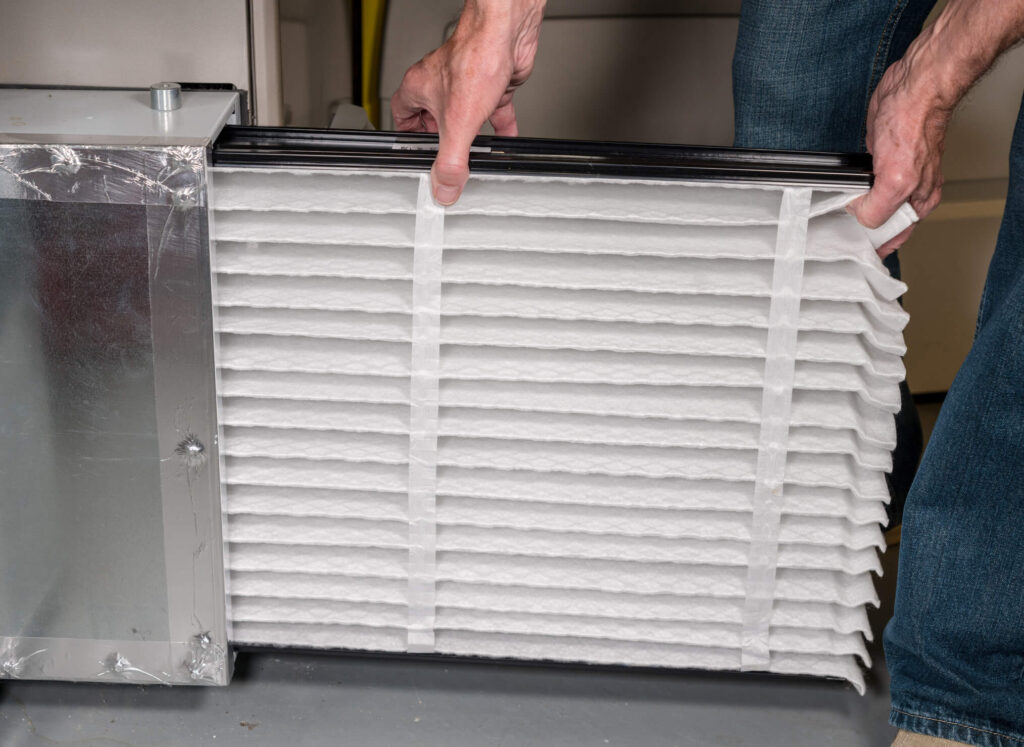When it comes to HVAC efficiency and performance, knowing everything about HVAC filters is essential.
In this guide, you’ll learn:
- How to place an air filter in an HVAC unit.
- How to select an HVAC filter based on MERV ratings.
- Critical safety procedures HVAC technicians follow when replacing filters.
When to Replace an HVAC Filter
Factors such as filtration materials, filter thickness, and manufacturer guidelines affect when to replace an HVAC filter.
The EPA Guide to Air Cleaners in the Home offers insight. You should replace HVAC 1″ filters every 60 to 90 days. A filter sized 4″ or more can last longer and may only need to be replaced once a year.
HVAC filter replacement schedules vary. Select the right size. Unfit filters can drive up energy costs.
Preparing for Installation
Invest the time to pick the right filter. It will benefit indoor air quality, save on energy bills, and help your heating and cooling system run its best.
Consider these key factors when selecting an HVAC filter:
- Confirm the size of your current air filter.
- Select a replacement filter that works with your current HVAC system.
- Review MERV ratings.
- Consider the indoor air quality needs of the people in your home.
- Compare the cost of filters.
HVAC Unit Types
Consider the type of HVAC unit you have before purchasing a new filter. Find the filter slot for the HVAC system to determine the right air filter to use.
- Residential Central AC systems use return ducts to distribute cool air through a home. The vertical metal box between the return duct and the furnace air handler houses the air filter slot.
- Horizontal Air Conditioners have filters installed on the air return side of the unit.
- Vertical Upflow Units are installed upright. They use a filter in the bottom door located below the HVAC unit.
Understanding MERV Ratings
A Minimum Efficiency Reporting Value (MERV) measures air filter effectiveness. MERV ratings range from 1-20. A higher MERV rating filters more particles and airborne contaminants from the air.
Common household air contaminants include:
- Dust
- Pollen
- Textile and carpet fibers
- Mold spores
- Pet dander
- Tobacco smoke

Choose an HVAC filter with a MERV rating based on the needs of your home. Check the filtration media to make sure it will work with your HVAC unit. This will help prevent airflow issues.
Balancing Cost and Performance
Improve energy efficiency and indoor air quality. Consider the HVAC filter size, MERV rating, and cost.
Thicker filters may cost more than 1″ HVAC filters, but they will not need to be replaced as often. Weigh the initial cost against long-term savings before buying a new filter.
Removing an Old HVAC Filter
During scheduled maintenance, an HVAC technician will inspect the area near your furnace or central air conditioning system. They will also find the air filter slot and note the direction the filter is facing.
HVAC Maintenance Safety Tip
An HVAC technician will typically shut off the power source to the unit before starting maintenance work. This safety precaution also prevents dust, pollen, and dirt from circulating through the air.
Installing a New HVAC Filter
Replacing an HVAC filter can be relatively easy. An HVAC technician will locate the filter slot and follow these steps to install the new air filter.
- Open the packaging and remove the paper insert. Find the arrow on the new filter.
- Carefully slide out the old filter without disturbing dust particles.
- Align the arrows on the filter in the direction of airflow. Face the metal mesh away from the blower. The duct may also have a directional arrow for filter placement.
- Place the filter securely in the slot of a wall unit or securely slide it into the filter slot.
- Close the air filter slot grill or grate.
- Discard the dirty HVAC air filter in a trash bag.

Factors including home location, climate, pets, and the age of the HVAC unit can affect filter performance. Regular filter changes create good indoor airflow. They also help HVAC systems run well.
Risks of Incorrect Placement
HVAC filter arrows should point toward your system’s blower fan or furnace. Installing an AC filter backward can affect how air flows through your home and cause strain on the HVAC system.
The location of the filter varies depending on your home’s HVAC unit. The risks of placing a filter incorrectly include:
- Reduced filtration efficiency.
- Higher energy bills.
- Increased wear-and-tear on components.
- Shorter HVAC unit lifespan.
If the directional arrows are missing on the filter, you may need extra help. Contact an HVAC professional for guidance on placement and schedule regular maintenance for an HVAC filter change.
Schedule HVAC Filter Changes and Maintenance
Schedule regular maintenance to keep your HVAC system in its best condition.
- Set filter replacement reminders in your phone or computer calendar.
- Schedule HVAC maintenance annually and replace the filter every one to three months, based on manufacturer recommendations. Change the filter more frequently if people in the household suffer from allergies.
- Use technology tools to connect. Simplify the replacement process. Real-time change reminder apps, like the Filtrete™ Smart Filter, monitor outdoor air quality and send air filter replacement reminders.

If the air conditioning or furnace filter appears dirty or clogged, replace it immediately. Never hand clean or reuse a filter. Old or damaged filters can compromise your HVAC system and the air quality in your home.
Contact a Professional HVAC Technician
Regular HVAC filter changes are the key to keeping indoor air clean and energy bills low. A dirty filter can cause your HVAC to work harder, leading to equipment damage. Contact an HVAC professional for routine maintenance with AC evaporator coil cleaning, system checks, and help with air filter changes.


